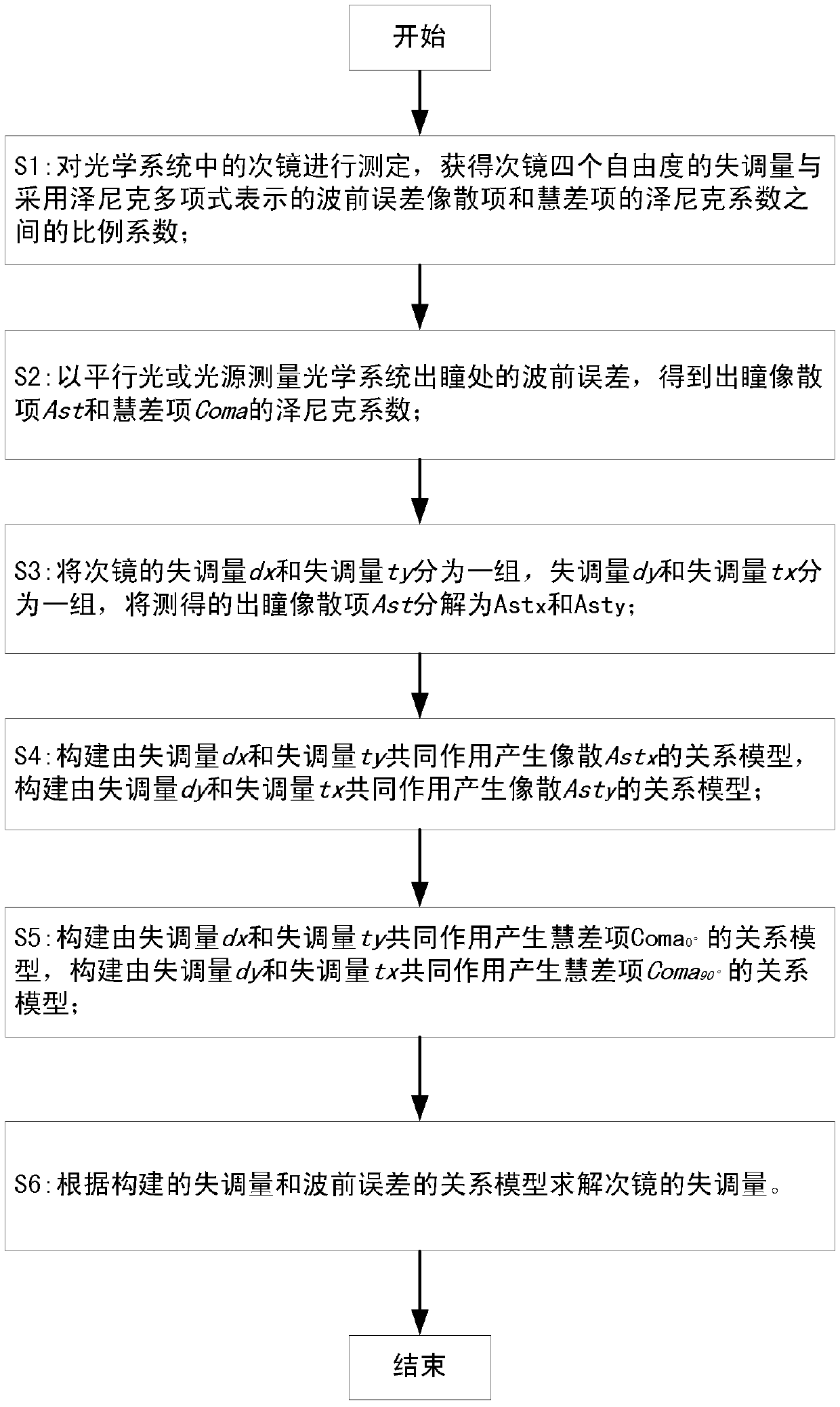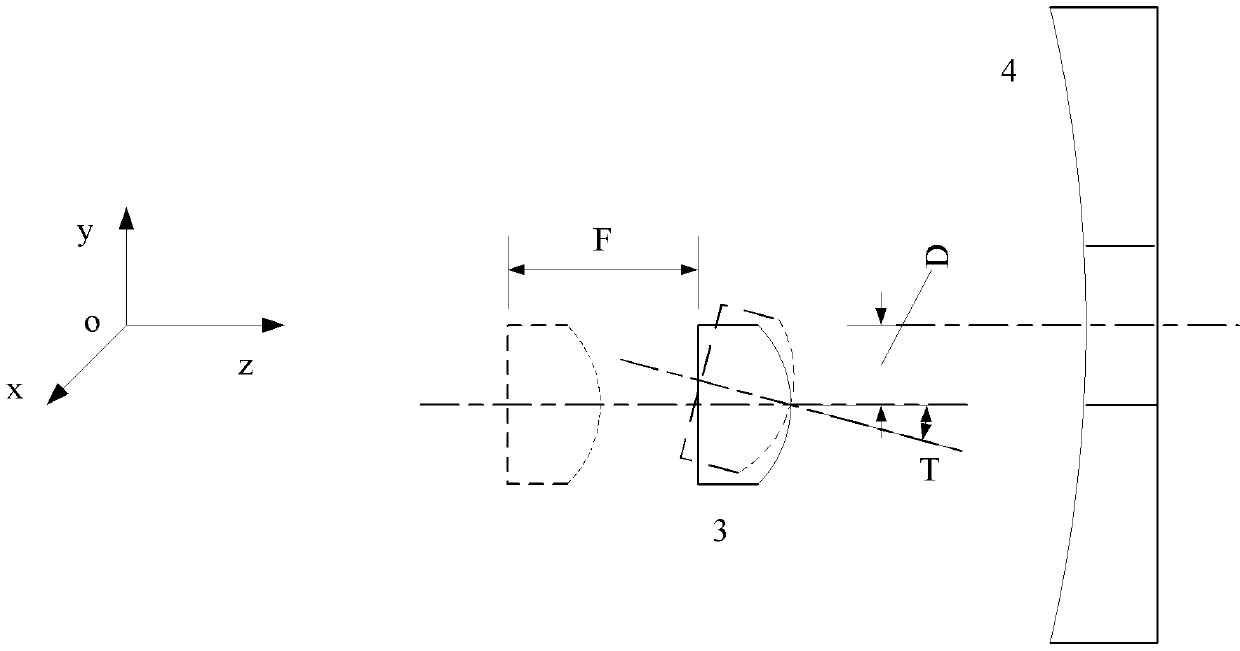Method acquiring telescope primary and secondary mirror alignment error based on astigmatism decomposition
A technology for aligning errors and primary and secondary mirrors, applied in the testing of machines/structural components, measuring devices, instruments, etc., can solve problems such as low algorithm reliability and stability, different wavefront errors, and uncertain convergence time, etc. problem, to achieve the effect of facilitating real-time automatic alignment, insensitivity to local surface shape errors, and reducing blindness
- Summary
- Abstract
- Description
- Claims
- Application Information
AI Technical Summary
Problems solved by technology
Method used
Image
Examples
Embodiment Construction
[0034] Embodiments of the present invention will be described below with reference to the accompanying drawings.
[0035] like figure 1 The method for obtaining the alignment error of the primary and secondary mirrors of the telescope based on the astigmatic decomposition is shown, and the specific steps are as follows:
[0036]Step S1: Measure the secondary mirror in the optical system, and obtain the proportionality coefficient between the four misalignments of the secondary mirror and the Zernike coefficient of the exit pupil wavefront error astigmatism term and the coma term expressed by the Zernike polynomial, when When measuring one of the offsets, keep the other offsets unchanged; the four offsets include: dx is the first translation offset of the secondary mirror vertex along the x direction, dy is the second mirror vertex along the y direction. Translation misalignment, tx is the first tilt misalignment that the secondary mirror rotates around the x-axis with the sec...
PUM
 Login to View More
Login to View More Abstract
Description
Claims
Application Information
 Login to View More
Login to View More - Generate Ideas
- Intellectual Property
- Life Sciences
- Materials
- Tech Scout
- Unparalleled Data Quality
- Higher Quality Content
- 60% Fewer Hallucinations
Browse by: Latest US Patents, China's latest patents, Technical Efficacy Thesaurus, Application Domain, Technology Topic, Popular Technical Reports.
© 2025 PatSnap. All rights reserved.Legal|Privacy policy|Modern Slavery Act Transparency Statement|Sitemap|About US| Contact US: help@patsnap.com



